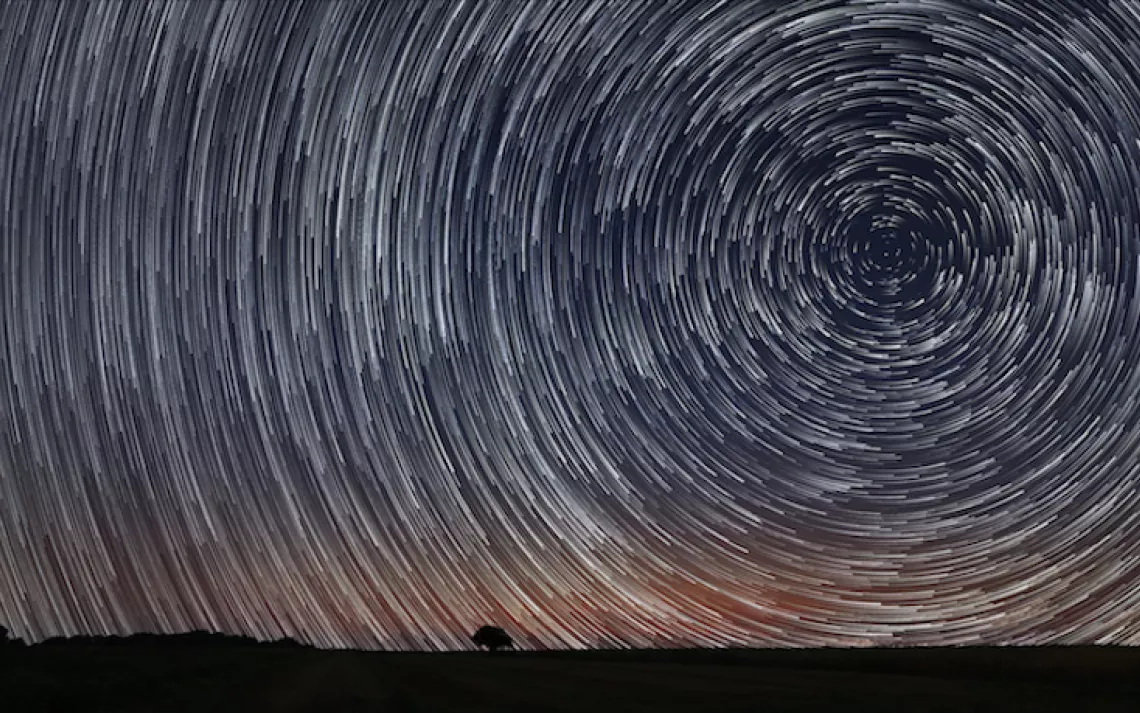January Observing Highlight: Quadrantid Meteors
Dust off those binoculars: January will feature a meteor shower unlike any you may have seen.

Photo by Allexxandar/iStock.
Most people are familiar with the Perseid meteors because they happen on warm August nights. This month, there will be a more active shower unlike any you may have seen. The Quadrantid meteors peak around January 3 to 4, just when people are returning to their regular routines after the crazy holidays.
The Quadrantid Meteor Shower is named for a defunct constellation known as Quadrans Muralis, which was an early astronomical instrument. This meteor shower can produce up to 120 blue / yellow / white meteors at its peak. It’s a kind of solar system debris that comes from a minor planet named 2003 EH, instead of a comet like most meteor showers.
The moon will be a waxing crescent during the meteor shower, looking thin and mostly out of the way. That will leave the skies dark for spotting tiny streaks from beyond.
Earth reaches perihelion, its closest point to the sun, on January 4 at 6:18 p.m. PST. Even though it may be frigidly cold outside, the sun is just 147 million kilometers away.
The moon looks beautiful in a crystal-clear winter sky; on January 1 it can be found as a thin crescent near brilliant Venus. On January 2, the moon moves between Venus and reddish Mars. On January 3, it has bypassed both Venus and Mars to rest below a circle of stars known as the Circlet of Pisces. This constellation of the Zodiac is said to represent two fish.
Around midnight from January 18/19 you can see the moon rise beside Jupiter with the star Spica just below. You can also look for the pair before sunrise on January 19 in the south-southwest. Mercury and Saturn can be seen back in the southeast closer to the horizon.
The first Full Moon of 2017 is on January 12. If you missed seeing the moon by Venus and Mars in the beginning of the month, the view is even better on the last day. A crescent moon will hang beside bright Venus and rosy Mars, and this time the circlet of Pisces will lie just to this solar system triangle’s right.
Summer is normally the time of year we look for the Milky Way, but it’s visible in winter, too. The summertime Milky Way is thicker because we’re looking toward the heart of our galaxy, and the summer constellation of Sagittarius.
But in winter we’re looking toward the outskirts of our galaxy. To find the Milky Way region opposite the galactic center, first find Orion. This well-known constellation rises in the east-southeast. Above Orion to the left (northeast) is the bright star Capella in Auriga. The bright star above Orion to the right is Aldebaran in Taurus. Between these two stars flows the thin section of the Milky Way. Try tracing the Milky Way’s path up across the constellations Perseus and Andromeda with its distinctive W shape.
 The Magazine of The Sierra Club
The Magazine of The Sierra Club







